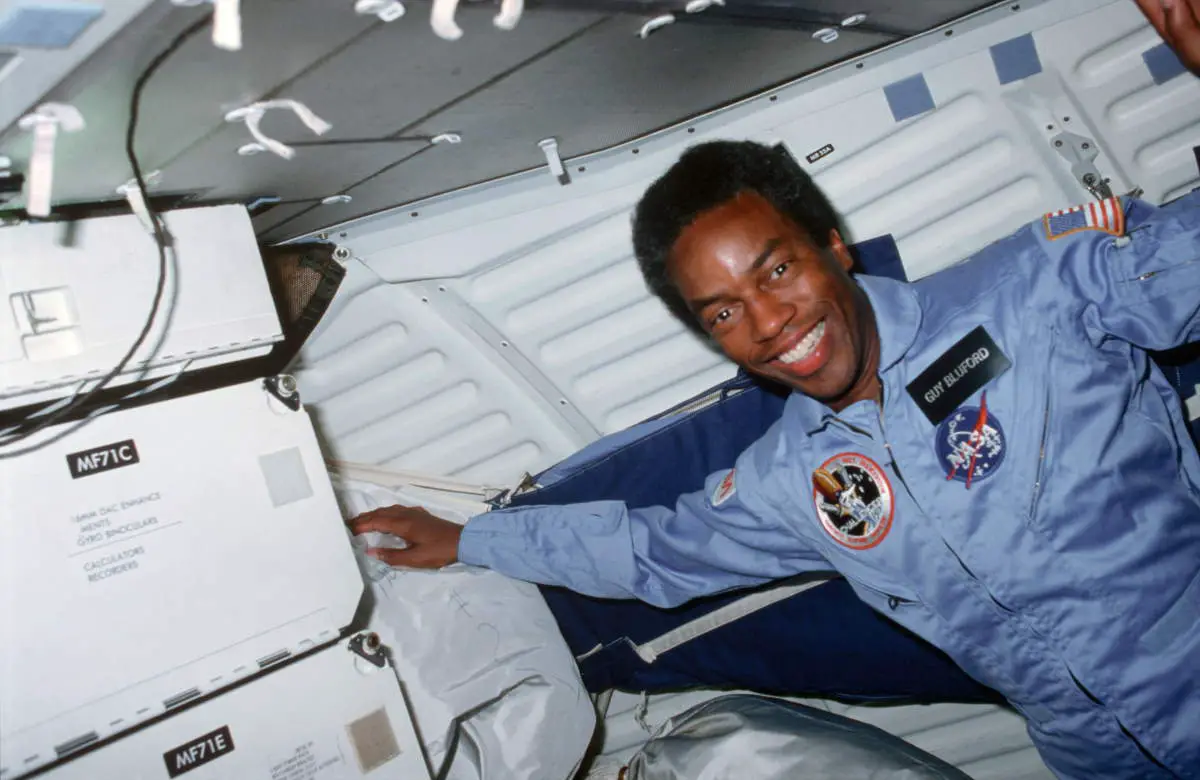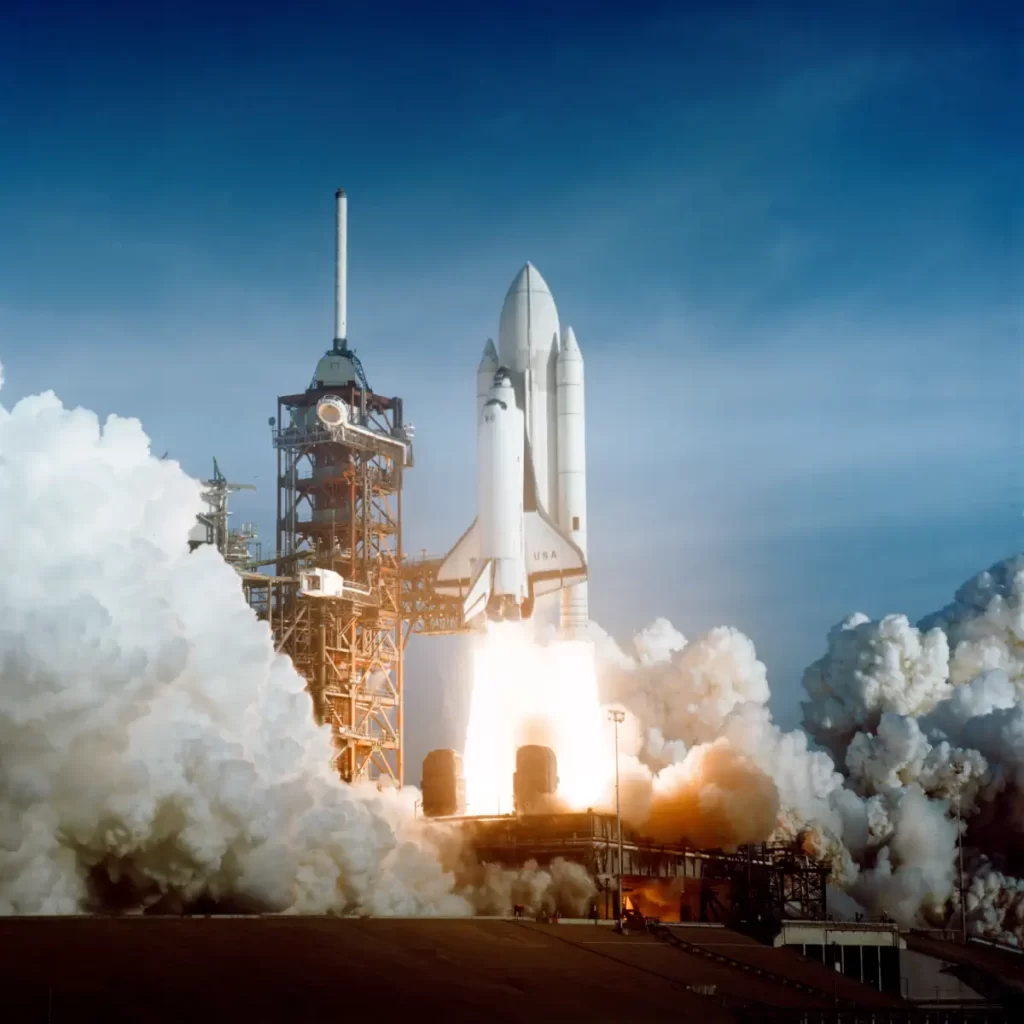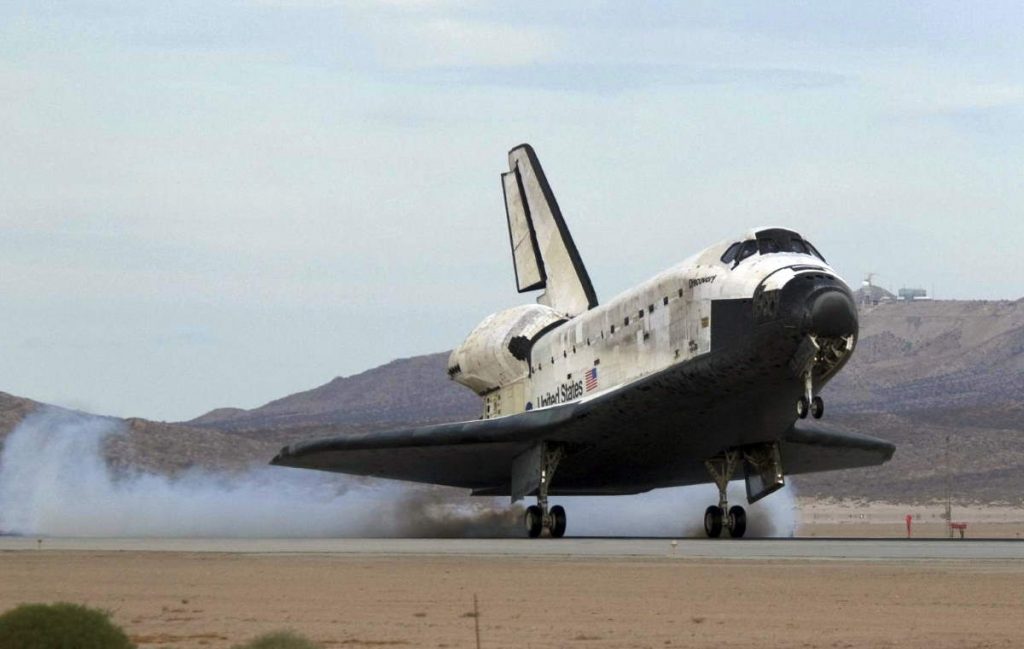On August 30, 1983, Guion Bluford, better known as Guy, was launched aboard Space Shuttle Challenger’s STS-8 mission on August 30, 1983, he became the first black astronaut in space.
Today’s (August 30) story of what happened this day in Science, Technology, Astronomy, and Space Exploration history.
Guion Bluford, the first black astronaut in space
Bluford was born on born November 22, 1942, in Philadelphia. He went to Pennsylvania State University to get a degree in aerospace engineering and went into the Air Force ROTC [Reserve Officers Training Corps] Program. He graduated from the university in September of 1964 with a bachelor’s degree in aerospace engineering and a commission as a second lieutenant in the United States Air Force.
In January of 1965, He went to pilot training at Williams Air Force Base in Phoenix, Arizona. In February of 1966, I graduated and received my Air Force pilot wings.
Upon graduation, Bluford received his first assignment as a fighter pilot to fly F-4C Phantoms in Vietnam. Over the next six to seven months, he attended several courses in preparation for his new assignment.
In October of 1966, he went to Cam Ranh Bay Air Base, Vietnam, and served as an F-4C fighter pilot in the 557 Tactical Fighter Squadron of the 12th Tactical Fighter Wing. From October 1966 to June 1967. He flew 144 combat missions throughout Southeast Asia. These missions included combat air patrol, close air-to-ground support, and air superiority flights throughout North and South Vietnam as well as Laos.
In June 1967, Bluford was assigned to Sheppard Air Force Base in Wichita Falls, Texas, as a T-38 instructor pilot. While serving his duty as an instructor pilot, he sought several opportunities to become an aerospace engineer within the Air Force. But, the Air Force was critically short of pilots at that time and thus needed my skills as an instructor pilot versus as an engineer.
The Air Force also indicated that Bluford would need to get a master’s degree in aerospace engineering if he wanted to serve in that career field.
In preparation for going back to graduate school, Bluford decided to take several advanced mathematics courses from the University of California, Berkeley, by correspondence.
Then, he applied to the Air Force Institute of Technology for the master’s degree program in aerospace engineering. In June of 1972, he was accepted into the program and was assigned to the Air Force Institute of Technology (AFIT) at Wright-Patterson Air Force Base in Dayton, Ohio. This was the break Bluford needed in order to get into the aerospace engineering career field. There he completed his research for the Ph.D. program
In 1977, the Air Force informed me that he needed to return to the flying job. As an Air Force pilot, Bluford needed to complete nine years of flying in the first eighteen years of service and he had only completed six years of flying.
On a Wednesday, in mid-October, 1977, Bluford was notified by NASA that he had been selected as an astronaut finalist.
In January 1978, NASA announced their selection of the astronauts for the eighth astronaut class, and Bluford was one of them.

Before the first Space Shuttle mission, the STS-1, Before the mission, Bluford’s job was to help develop and verify the flight software for STS-1. The engineers ran a lot of nominal and off-nominal flight simulations in order to fully understand the operation of the flight software. They would then provide that information to the flight test engineers and to John Young and Bob [Robert L.] Crippen as they prepared for STS-1.
Also, the lessons learned were directly fed back to the flight simulator folks so as to enhance the astronaut training for the first four Space Shuttle crews.
During the STS-1 mission, Bluford was assigned to work with Frank Reynolds of ABC News out at Edwards [Air Force Base]. His job was to provide technical support to the network during the final phases of the flight.
STS-8 selection: Bluford became the first black astronaut in space
In 1982, Bluford was selected for STS-8, the eighth NASA Space Shuttle mission and the third flight of the Space Shuttle Challenger.
The mission required a night launch and a night landing because of the orbital requirements of the Indian satellite called INSAT 1-B. This was a weather and communication satellite with a Payload Assist Module (PAM) rocket that would boost the satellite into a geosynchronous transfer orbit.
The astronauts were also manifested to carry a Tracking & Data Relay Satellite (TDRS) on an IUS [Inertial Upper Stage]. The payload was to weigh over 65,000 pounds (29.4 tonnes). It was going to be the heaviest Space Shuttle flight to date, with very little weight growth margin.
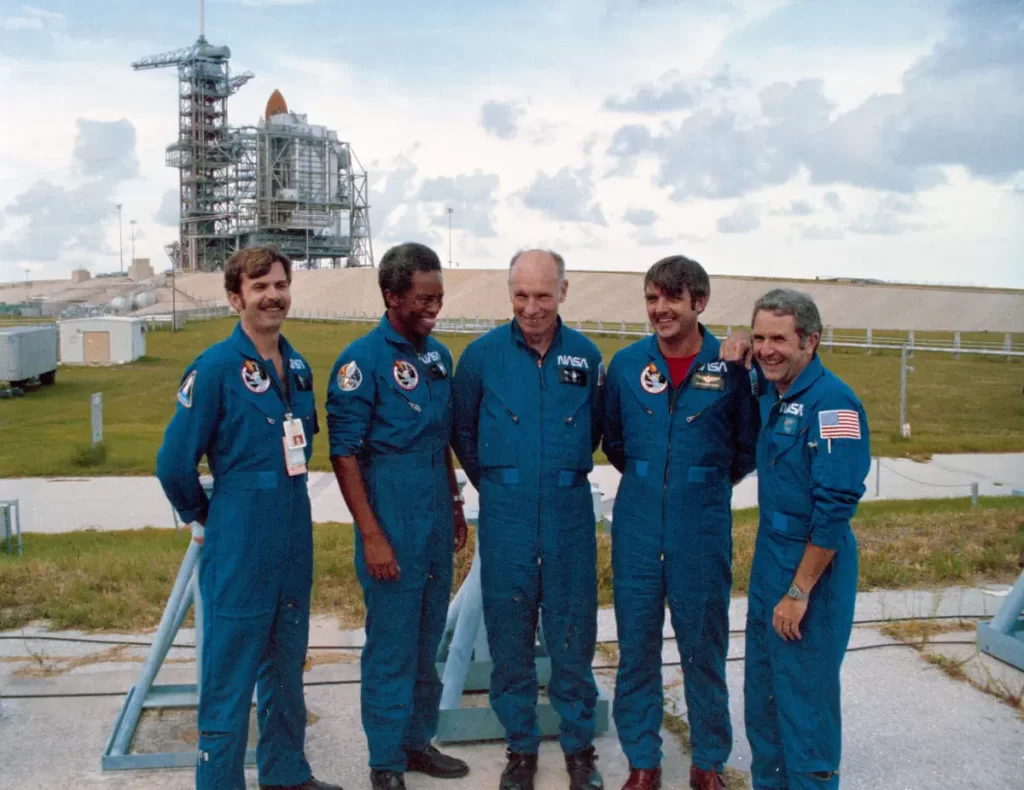
So, one of the main challenges for the STS-8 flight was to develop the procedures and techniques for launching and landing the Space Shuttle at night. Dick Truly and Dan Brandenstein spent a lot of time with the NASA aircraft ops people at both the Cape and Edwards Air Force Base looking at various ground lighting configurations for supporting a Shuttle landing. Numerous approaches and landings were made in the STA to determine the best lighting configuration for the flight.
Numerous approaches and landings were made in the STA to determine the best lighting configuration for our flight. Several flights were even flown in the NASA 707 aircraft in order to give the flight crew some experience in heavy aircraft operations. After a lot of trial and error, a lighting configuration was established, that best supported the STS-8 mission. This included flood lights on the approach end of the runway and additional lights along the sides of the runway.
STS-8 was launched on August 30, 1983, and with that historic launch, Bluford became the first black astronaut in space.
Bluford recalls:
“…as Challenger lifted off and rotated to align us to a 28.45-degree inclination. The Orbiter pitched down as we headed down range, upside down. Approximately, 2 minutes and 15 seconds into the mission, we jettisoned the Solid Rocket Boosters. There was a large momentary flash of light in the windows when the SRB pyros fired.”
“We continued our ride on the three Main Engines of the Shuttle for the next six and a half minutes and then jettisoned the External Tank at 8 minutes and 45 seconds into the flight. Once again, we were startled by the firing of the ET pyros.”
“We made two Orbital Maneuvering System (OMS) burns, one at 10 minutes, 19 seconds into the flight and the other at 44 minutes, 49 seconds into the flight. This put us into an orbit of 160 nautical miles above the Earth. It was a great trip. I still remember seeing the African coast and the Sahara desert coming up over the horizon. It was a beautiful sight. Once we completed our OMS burns, I unstrapped from my seat and started floating on the top of the cockpit. I remember saying to myself ‘Oh, my goodness, zero-G.’“
“And like all the other astronauts before me, I fumbled around in zero-G for quite a while before I got my space legs. However, it was a great feeling, and I knew right away that I was going to enjoy this experience.”
STS-8 mission orbital operations
After the successful insertion of the Space Shuttle Challenger into a circular orbit at 296 kilometers (184 miles), the first scientific experiments began.
The major event of the second day (August 31, 1983) was the successful deployment of the INSAT-1B satellite, which took place at 07:48 UTC, with Challenger then maneuvering to avoid the firing of the booster motor forty minutes later. Other experimentation continued, though telemetry through TDRS was lost for around three hours, requiring manual intervention.
On the third and fourth days (September 1 and 2, 1983), work began with the Canadarm Remote Manipulator System and the payload test article, and communications testing through TDRS continued. The former was successful, but the latter lost contact on a number of occasions, due to problems at the White Sands ground station. As a result, the crew had to be awakened early on September 1, 1983, in order to deal with the problem.
The orbiter performed an Orbital Maneuvering System (OMS) firing on September 2, 1983, to place itself in a lower orbit, where the air density was higher and the oxygen interaction experiments would work more effectively.
On the fifth day (September 3, 1983), testing of the Canadarm continued, and the TDRS tests were carried out with more success. A live press conference was held late in the day, the first in-flight press conference since Apollo 17, the last Apollo mission to the Moon.
During the mission, the crew also had a telecom with Ronald Regan, the 40th president of the United States during the flight. He praised the astronauts on their accomplishments and wished them well for the remainder of the flight.
On the sixth day (September 4, 1983), experiment runs were completed and the crew prepared to deorbit.
STS-8 completed 98 orbits of the Earth in 145 hours before landing at Edwards Air Force Base, California, on September 5, 1983.
Bluford recalls:
“We rotated the vehicle so that it was flying backward; we performed the deorbit burn, and then we rotated the vehicle so that it was facing forward and re-entered the Earth’s atmosphere.”
“As we re-entered the Earth’s atmosphere, we began to feel the effects of gravity and see the fiery plasma of hot air burn outside the front windows of the Orbiter. Dale [Gardner] took pictures of the hot plasma as it enveloped us during entry, and he would occasionally hand me the camera. I could feel the camera getting heavier and heavier as we got closer to home.”
“Dick [commander Richard H. Truly] flew us home, and we landed at Edwards Air Force Base a little after midnight on the sixth day. There was an enthusiastic crowd to greet us at our brief post-flight press conference. We joined up with our wives, who were waiting for us, and NASA flew us back to Houston”.
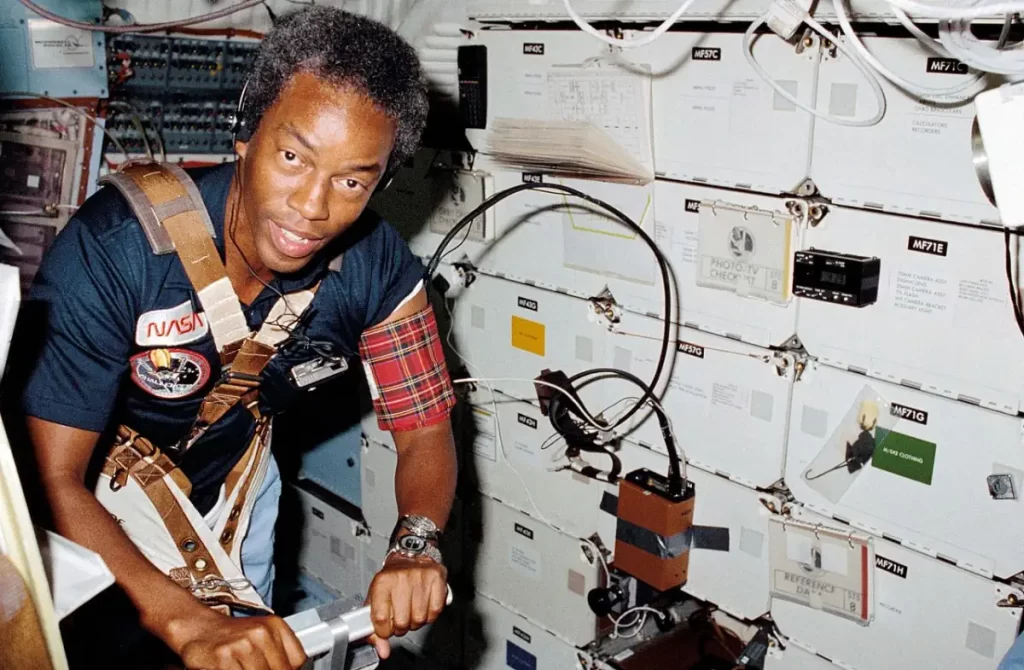
After STS-8 mission
Bluford has flown into space three times more: first, with the STS-61-A mission, and again aboard the Space Shuttle Challenger, in 1985.
His third space mission was STS-39, which launched from Kennedy Space Center on April 28, 1991, aboard the Space Shuttle Discovery.
Bluford’s last mission was STS-53, which launched from Kennedy Space Center on December 2, 1992, aboard Space Shuttle Discovery.
Post-NASA career
In July 1993, Bluford left NASA and retired from the Air Force in July 1993 to take the post of Vice President/General Manager, in the Engineering Division of NYMA, a company that provides engineering and information technology services in Greenbelt, Maryland.
In May 1997, he became Vice President of the Aerospace Sector of Federal Data Corporation and in October 2000, became the Vice President of Microgravity R&D and Operations for the Northrop Grumman Corporation.
He retired from Northrop Grumman in September 2002 to become the President of Aerospace Technology, an engineering consulting organization in Cleveland, Ohio.
Bluford was inducted into the
- International Space Hall of Fame in 1997
- The United States Astronaut Hall of Fame in 2010
- and the National Aviation Hall of Fame in 2019.
Sources
- “Celebrating Guy Bluford’s Historic First Flight” on the NASA website
- Guion Bluford Biographical Data on the NASA website
- Guion Bluford on Wikipedia
- “NASA Johnson Space Center Oral History Project – Edited Oral History Transcript: Guion S. Bluford, Jr., Interviewed by Jennifer Ross-Nazzal, Houston, Texas. August 2, 2004” on the NASA history portal
- STS-8 on Wikipedia
- Moon Landings: All-Time List [1966-2025] - February 2, 2025
- What Is Max-Q and Why Is It Important During Rocket Launches? - January 16, 2025
- Top 10 Tallest Rockets Ever Launched [2025 Update] - January 16, 2025
